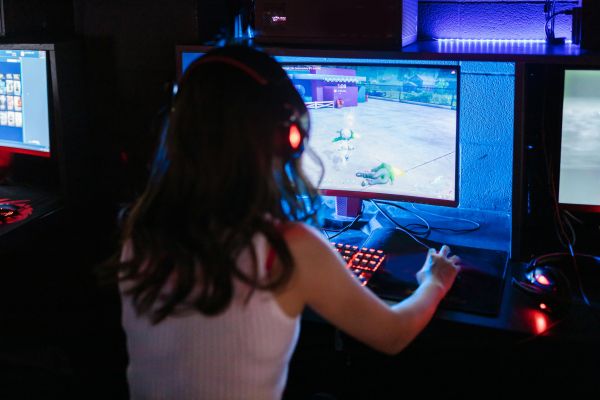Exploring Ethereum (ETH) and its Impact on the Gaming Industry

Ethereum, among other cryptocurrencies, has long outgrown the financial sphere and is now moving forward to position itself in various fields, such as gaming, one of the most dynamic, where blockchain technology is breaking new ground. Co-Optimus is such a platform that loudly speaks about co-op gaming news and features and is going to explore how Ethereum and blockchain are changing gaming, especially multiplayer and co-op play.
1. Ethereum’s Role in Decentralized Gaming Platforms
The Ethereum Blockchain has, until recently, been at the heart of gaming platforms, such as decentralized gaming. It provides the capability for game developers to build video games where assets, economies and sometimes even governance are decentralized, giving players a unique sense of control over their digital experiences.
For instance, Axie Infinity and Gods Unchained are two of the most popular Ethereum blockchain-based online games. These games let players have ownership of in-game items, which can be traded as NFTs between players. On the other hand, this model of ownership allows gamers to profit from playing games, which contrasts with traditional models used in industries. Items within these decentralized games may be traded in the open market for ETH. So, in this sense, the eth to usd conversion rate is starting to be relevant to the gamers of these game economies.
2. In-Game Economies and ETH
Traditional gaming in-game economies were completely controlled by developers, while Ethereum introduces full ownership of assets into the hands of the players. Thanks to the functionality of smart contracts provided by Ethereum, games can now introduce decentralized marketplaces where players can purchase, sell and trade items for ETH.
- Smart Contracts: Ethereum's smart contracts make these transactions automated, secure and transparent. Gamers are fully aware that all in-game items, such as weapons and skins, can be traced on the blockchain to ensure ownership. The value of ETH in USD carries over into the values of these items, which means real-world market trends continue to bear importance for players.
For instance, where the ETH to USD rate increases, the value of in-game assets pegged with ETH will increase even more. Those who retain sizeable ETH-based assets will most likely see their gaming portfolio rise and thereby blur this line further, separating in-game economies from the real world.
3. NFTs and Digital Ownership in Gaming
Probably the most spoken-about Ethereum-based innovations are non-fungible tokens, which take center stage in the gaming industry by facilitating genuine digital ownership of items, such as characters, skins, or weapons, that can be bought, traded, or sold outside games. This opens a whole new dynamic when considering cooperative gaming communities built upon teamwork and resource sharing.
- Digital Scarcity: Most digital items in traditional games are infinite and fall to the discretion of their developers. With NFTs, however, one may introduce scarcity-an item is limited by nature and therefore can gain value over time. The rarity of these NFTs often depends on Ethereum's blockchain, where the ETH to USD rate becomes a critical factor in determining their market price.
Take, for example, a gameplay co-op wherein gamers will try to share resources for the purchase of a rare item on the Ethereum blockchain. It then becomes very valuable in many ways as a virtual and real-world investment, depending on how it is considered.
4. Ethereum-Based dApps in Co-op Games
Decentralized applications built on Ethereum are the way forward when it comes to structuring multiplayer games. Players in co-op games usually require trust and cooperation; Ethereum-based dApps have made sure that all transactions and agreements are transparent.
- Game Development on Ethereum: Indie developers use Ethereum for co-op games in which players can crowdfund the game development or even participate in the decision-making process by issuing decentralized votes. Player-driven game development may revolutionize the way games are created and distributed.
For example, Decentraland is a virtual world powered by Ethereum where players can build and trade digital assets. Such ideas can later be transferred to the realm of collaborative game-players teaming up to build environments or complete missions-fully aware that their assets will be secure and verifiable on the blockchain.
5. The Importance of ETH to USD Exchange Rate for Gamers
While Ethereum is increasingly integrated into gaming, the knowledge of the ETH to USD exchange rate becomes instrumental not only to players but even to investors who buy in-game assets or tokens. The most important thing about digital cryptocurrencies is unpredictability-the real-world value of ETH-based assets can change a great deal.
For example, a skin bought for 0.1 ETH might be worth $200 today but could rise or fall depending on the market. Serious gamers desiring to participate in the decentralized gaming economies have to be sensitive to the ETH price in USD, as it is that which would positively or otherwise affect their financial outcomes within the game.
Conclusion
Ethereum immediately disrupts the gaming industry by creating new ways for players to interact with games through decentralized platforms, NFTs and in-game economies. For cooperation-based gaming communities, these innovations open up exciting possibilities, from enhanced digital ownership to transparent in-game economies. As Ethereum continues to grow in development, gamers need to stay cognizant of shifting ETH-to-USD exchange rates and the general cryptocurrency market; that is where changes in these areas could affect how they game and invest in digital assets. Ethereum has brought financial literacy into the gamers of this digitized world through a mix of fun and engagement. Understanding such dynamics could be a gamer's next big step, combining passions for co-op games with the growing world of cryptocurrency to the next level.